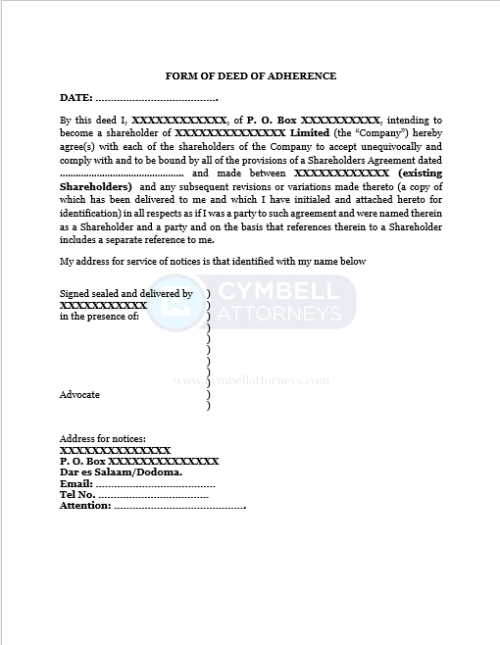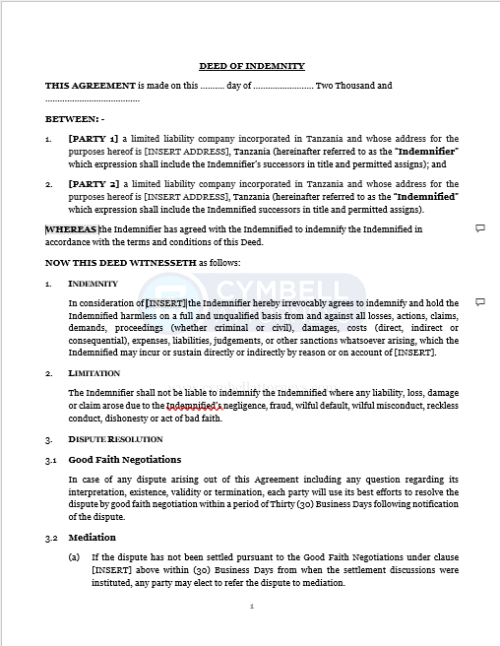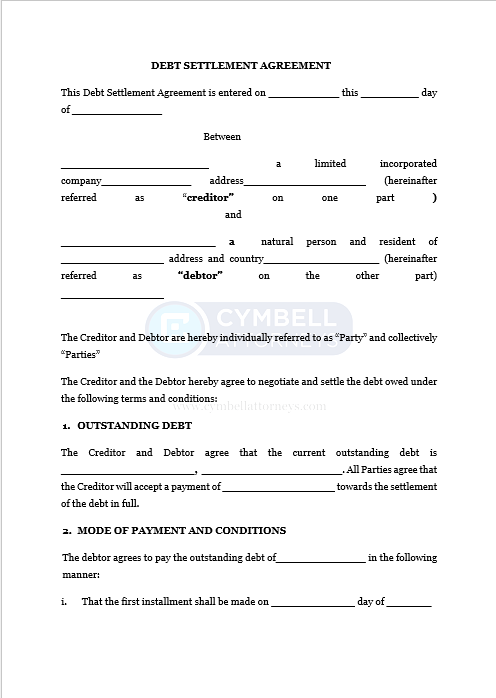- This precedent is intended to act as a guide in drafting a Statutory declaration by the to-be-appointed company director/CEO that he/she is mentally sound, of good and impeccable character and has financial stability. Not declared a bankrupt by any court.
- It can be modified and amended from time to time depending on the agendas, nature and demands of the company.
-
 Notes:
Notes: -
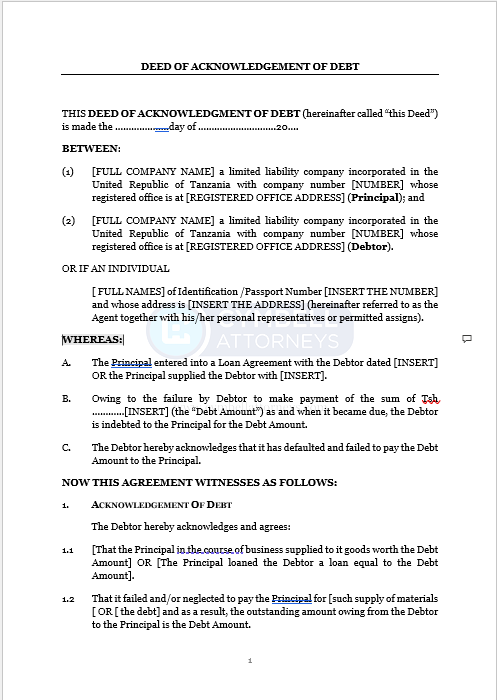 Notes A Deed of Acknowledgement of Debt is a legal document whereby the debtor/borrower acknowledges that they owe the lender money. The purpose of a debt acknowledgement deed is to provide to the lender with a document setting out an amount of outstanding debt, that the lender may rely on as evidence of an existing debt should any issues or disputes in respect of the debt arise. This document is a standard Deed used in cases where the debtor owes money to the lender arising out of a loan or supply of goods.
Notes A Deed of Acknowledgement of Debt is a legal document whereby the debtor/borrower acknowledges that they owe the lender money. The purpose of a debt acknowledgement deed is to provide to the lender with a document setting out an amount of outstanding debt, that the lender may rely on as evidence of an existing debt should any issues or disputes in respect of the debt arise. This document is a standard Deed used in cases where the debtor owes money to the lender arising out of a loan or supply of goods. -
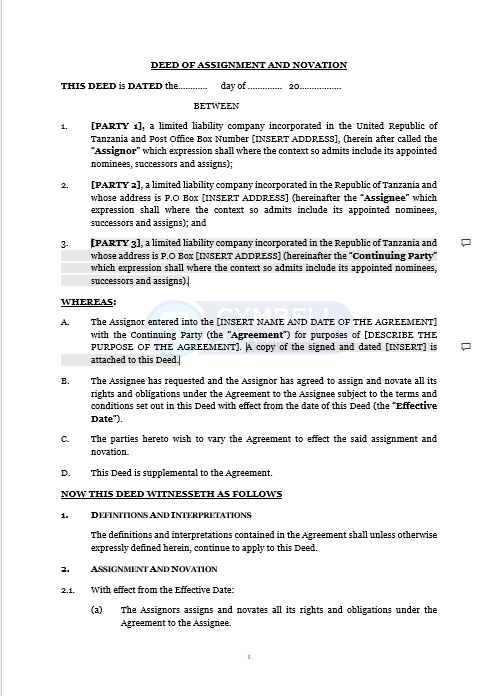 Notes: Deed of Assignment and Novation An assignment agreement transfers one party's rights under a contract to another party. The party transferring their rights is the assignor; the party receiving them is the assignee. Under an assignment only the benefits of the contract are transferred whilst the obligations remain with the assignor. Novation is a mechanism where one party transfers all its obligations and rights under a contract to a third party, with the consent of the original counterparty. This standard document has integrated notes with important explanations and drafting tips.
Notes: Deed of Assignment and Novation An assignment agreement transfers one party's rights under a contract to another party. The party transferring their rights is the assignor; the party receiving them is the assignee. Under an assignment only the benefits of the contract are transferred whilst the obligations remain with the assignor. Novation is a mechanism where one party transfers all its obligations and rights under a contract to a third party, with the consent of the original counterparty. This standard document has integrated notes with important explanations and drafting tips. -
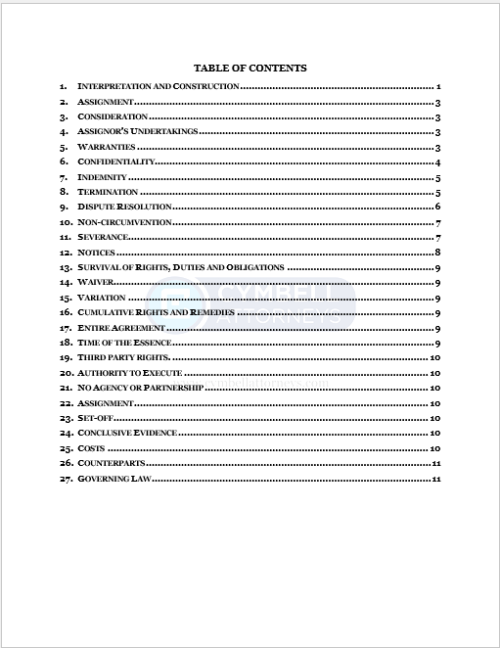 Notes:
Notes:- This precedent is intended to act as a guide in drafting a Deed of AdherenceNotes:A Deed of Assignment of Trademark is a document through which the registered proprietor of a trademark transfers his/her/its rights, title and interest in the trademark to a third party. This gives the third party the right to use the trademark of the owner.
Once the Deed of Assignment is done it is required to be registered with the Registrar of Trademarks.
The difference between an assignment and a trademark is that a license allows the licensor to retain their rights and interests in their IP while an assignment transfer all of the assignor’s rights and interest to the assignee.
This Deed is applicable in the following scenarios:
- where the assignment is absolute; and
- where the goodwill of the business is not being assigned.
- This precedent is intended to act as a guide in drafting a Deed of AdherenceNotes:A Deed of Assignment of Trademark is a document through which the registered proprietor of a trademark transfers his/her/its rights, title and interest in the trademark to a third party. This gives the third party the right to use the trademark of the owner.
Once the Deed of Assignment is done it is required to be registered with the Registrar of Trademarks.
The difference between an assignment and a trademark is that a license allows the licensor to retain their rights and interests in their IP while an assignment transfer all of the assignor’s rights and interest to the assignee.
This Deed is applicable in the following scenarios:
-
 Notes: A Deed of Assignment of Trademark is a document through which the registered proprietor of a trademark transfers his/her/its rights, title and interest in the trademark to a third party. This gives the third party the right to use the trademark of the owner. Once the Deed of Assignment is done it is required to be registered with the Registrar of Trademarks. The difference between an assignment and a trademark is that a license allows the licensor to retain their rights and interests in their IP while an assignment transfer all of the assignor’s rights and interest to the assignee. This Deed is applicable in the following scenarios:
Notes: A Deed of Assignment of Trademark is a document through which the registered proprietor of a trademark transfers his/her/its rights, title and interest in the trademark to a third party. This gives the third party the right to use the trademark of the owner. Once the Deed of Assignment is done it is required to be registered with the Registrar of Trademarks. The difference between an assignment and a trademark is that a license allows the licensor to retain their rights and interests in their IP while an assignment transfer all of the assignor’s rights and interest to the assignee. This Deed is applicable in the following scenarios:- where the assignment is absolute; and
- where the goodwill of the business is being assigned.
-
 Notes: A Deed of Assignment of Trademark is a document through which the registered proprietor of a trademark transfers his/her/its rights, title and interest in the trademark to a third party. This gives the third party the right to use the trademark of the owner. Once the Deed of Assignment is done it is required to be registered with the Registrar of Trademarks. The difference between an assignment and a trademark is that a license allows the licensor to retain their rights and interests in their IP while an assignment transfer all of the assignor’s rights and interest to the assignee. This Deed is applicable in the following scenarios:
Notes: A Deed of Assignment of Trademark is a document through which the registered proprietor of a trademark transfers his/her/its rights, title and interest in the trademark to a third party. This gives the third party the right to use the trademark of the owner. Once the Deed of Assignment is done it is required to be registered with the Registrar of Trademarks. The difference between an assignment and a trademark is that a license allows the licensor to retain their rights and interests in their IP while an assignment transfer all of the assignor’s rights and interest to the assignee. This Deed is applicable in the following scenarios:- where the assignment is absolute; and
- where the goodwill of the business is being assigned.
-
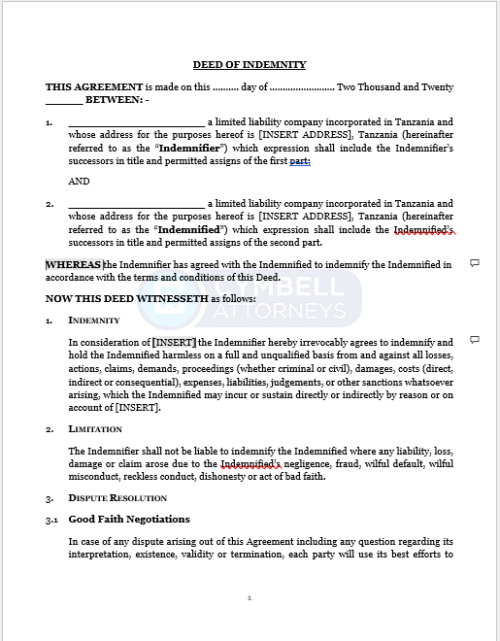 Notes: A Deed of Assignment of Trademark is a document through which the registered proprietor of a trademark transfers his/her/its rights, title and interest in the trademark to a third party. This gives the third party the right to use the trademark of the owner. Once the Deed of Assignment is done it is required to be registered with the Registrar of Trademarks. The difference between an assignment and a trademark is that a license allows the licensor to retain their rights and interests in their IP while an assignment transfer all of the assignor’s rights and interest to the assignee. This Deed is applicable in the following scenarios:
Notes: A Deed of Assignment of Trademark is a document through which the registered proprietor of a trademark transfers his/her/its rights, title and interest in the trademark to a third party. This gives the third party the right to use the trademark of the owner. Once the Deed of Assignment is done it is required to be registered with the Registrar of Trademarks. The difference between an assignment and a trademark is that a license allows the licensor to retain their rights and interests in their IP while an assignment transfer all of the assignor’s rights and interest to the assignee. This Deed is applicable in the following scenarios:- where the assignment is absolute; and
- where the goodwill of the business is being assigned.

